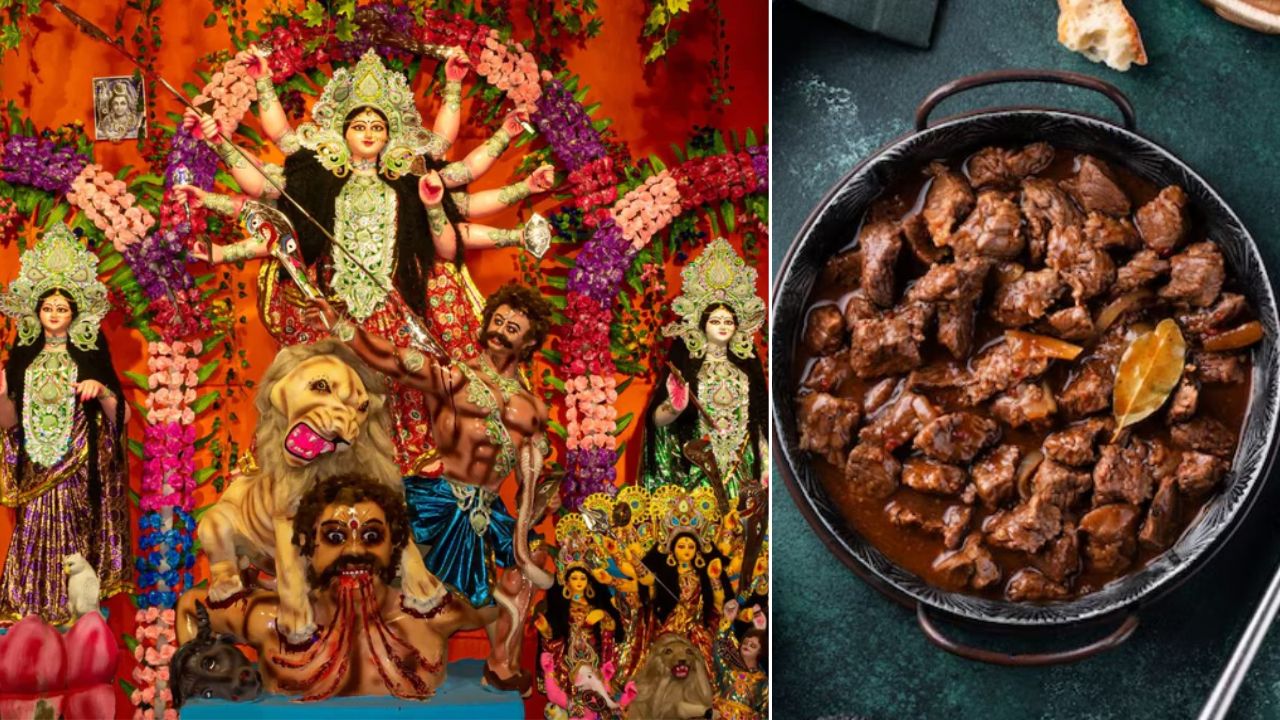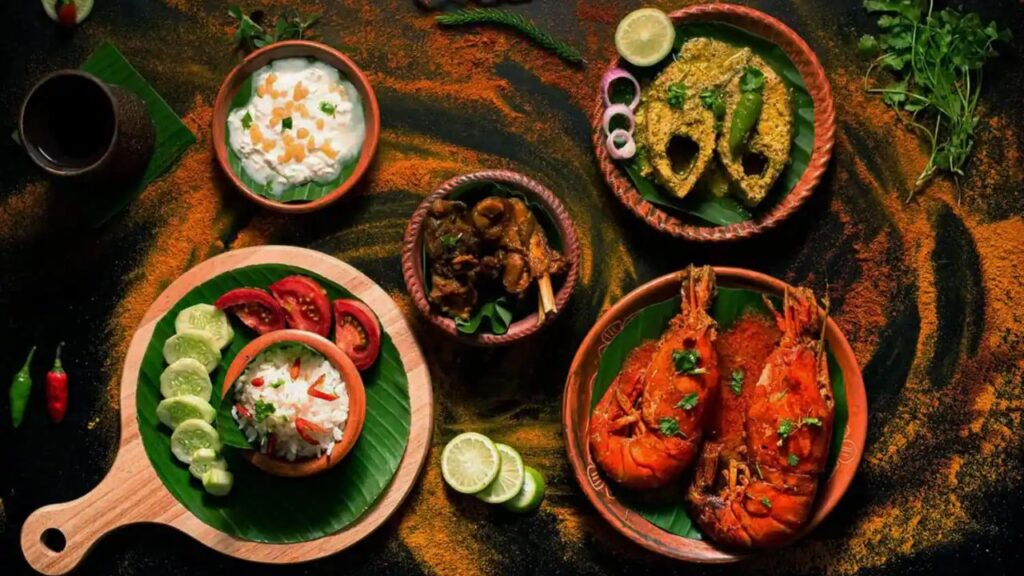 English
English

In Bengali society, Goddess Durga is seen not just as a goddess, but as the daughter of the family. It is believed that during Sharadiya Navratri, Goddess Durga visits her parent’s home with her children.

Durga Puja and Bengali Tradition
New Delhi: Navratri and Durga Puja evokes images of fasting, satvik food, and devotion. While in North India, meat, alcohol, and garlic are avoided during Navratri, Bengal takes a different approach. Here, meat, fish, and traditional dishes are considered an integral part of the Durga Puja tradition. This is why people often question—how can meat be included in the worship of Goddess Durga?
In Bengali society, Goddess Durga is seen not just as a goddess, but as the daughter of the family. It is believed that during Sharadiya Navratri, Goddess Durga visits her parent's home with her children. Just as a family prepares every dish of a daughter's choice when a daughter arrives, Bengali families consider the Goddess a member of the family and prepare traditional dishes to welcome her.
These include fish, mutton, and other special dishes. This festival is not just a religious ritual, but also a reunion for the entire community and family.
Navratri Day 8 devoted to Goddess Mahagauri; Know katha, puja vidhi and mantra
Durga Puja in Bengal is rooted in the Shakta sect. In this sect, sacrifice and non-vegetarianism hold special significance in the worship of the Goddess. In many places, meat or fish is offered to Goddess Durga. This offering is prepared in a special way, without onion or garlic, called Niramish Mangsho. Later, it is distributed among devotees as prasad. Here, food is not just a taste, but a part of faith and tradition.
In Bengal, fish is considered not just a food, but a symbol of prosperity and well-being. A feast on weddings, birthdays, or other auspicious occasions is considered incomplete without fish.

Fish considered as a symbol of prosperity
Placing a special pair of fish in front of the Mangal Ghat on the morning of Vijaya Dashami is also considered a symbol of auspiciousness. This is why eating fish during Durga Puja is considered a sign of tradition and prosperity rather than a sign of breaking the fast.
Navratri Day 7 Devoted To Maa Kaalratri; Know puja vidhi, mantra and bhog
It's also true that not all families in Bengali society eat meat during Durga Puja. Many families belonging to the Vaishnav tradition follow a sattvic diet and abstain from meat and fish. However, for most Bengali families, preparing meat and fish dishes is part of the joy of Durga Puja.
Over time, the number of sattvic eaters has increased in many cities, but this centuries-old tradition still gives Bengal's Durga Puja a distinct and unique identity from other states.
The consumption of meat and fish during Durga Puja is a hallmark of Bengali culture. Here, the Goddess is respected as the family's daughter and every dish of her choice is served. This is why Durga Puja in Bengal is not just a ritual but a wonderful confluence of food, tradition, and family bonding.
No related posts found.